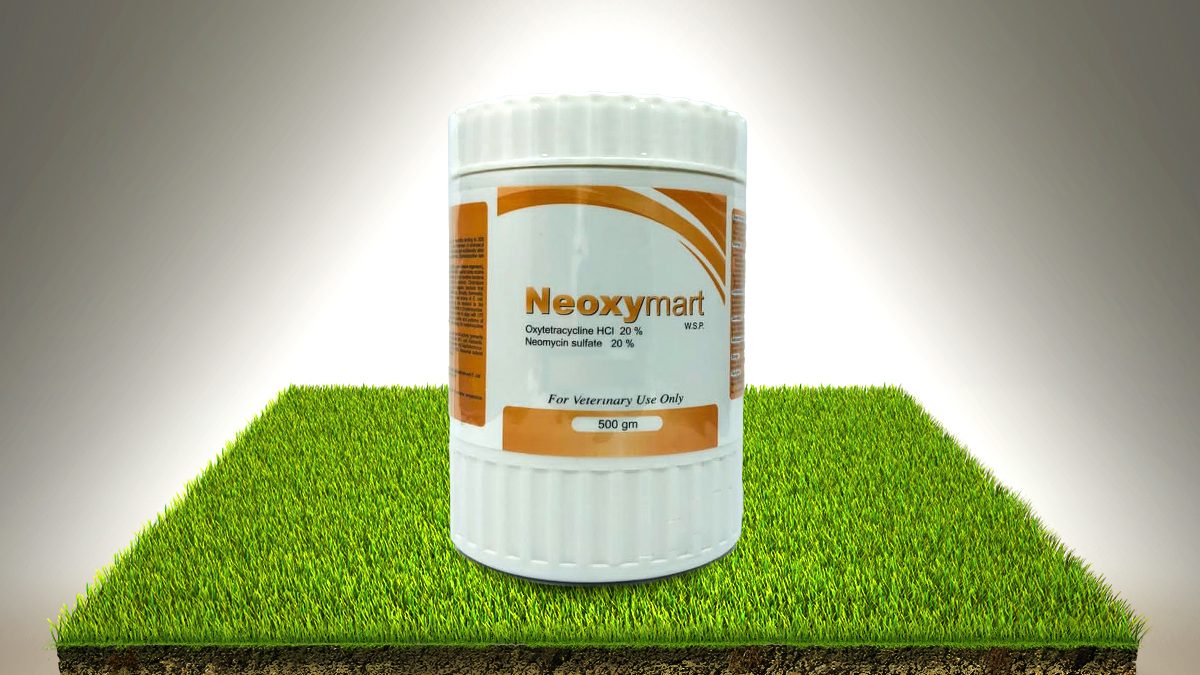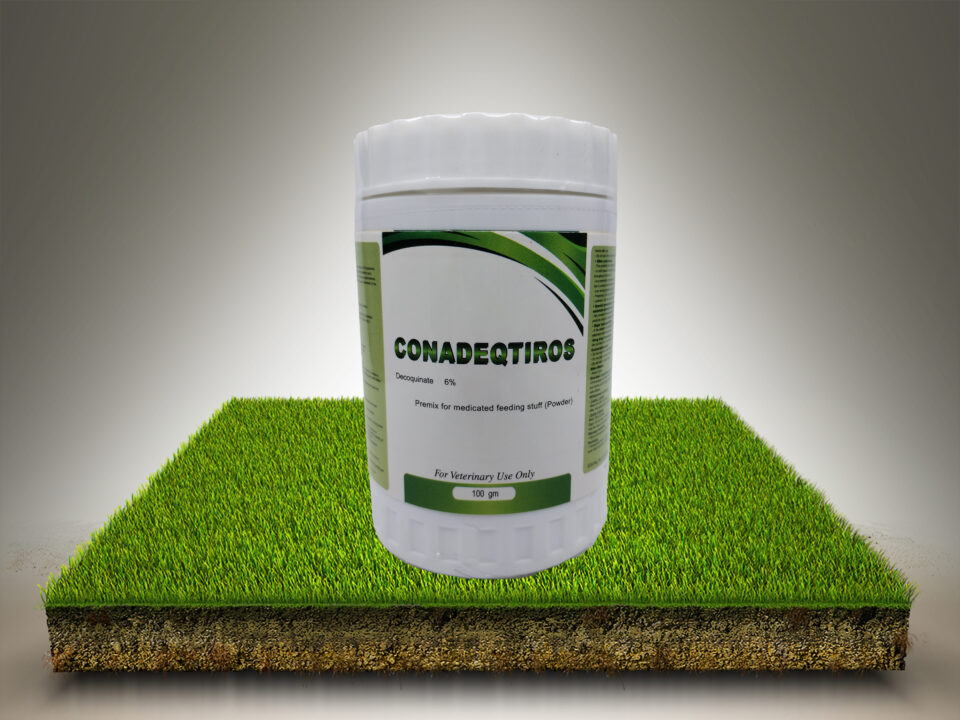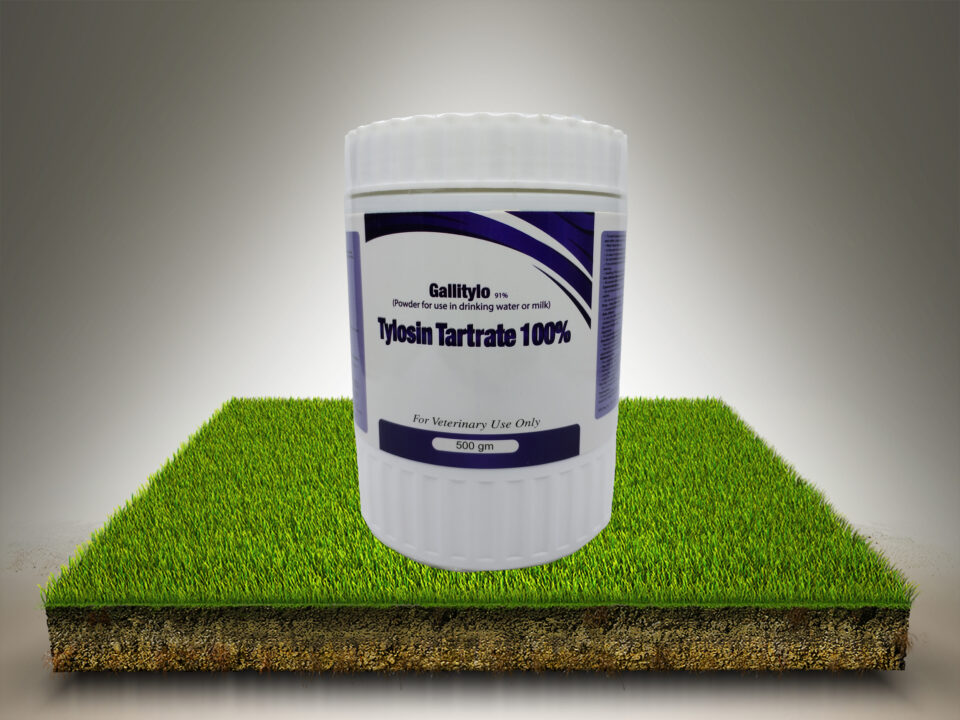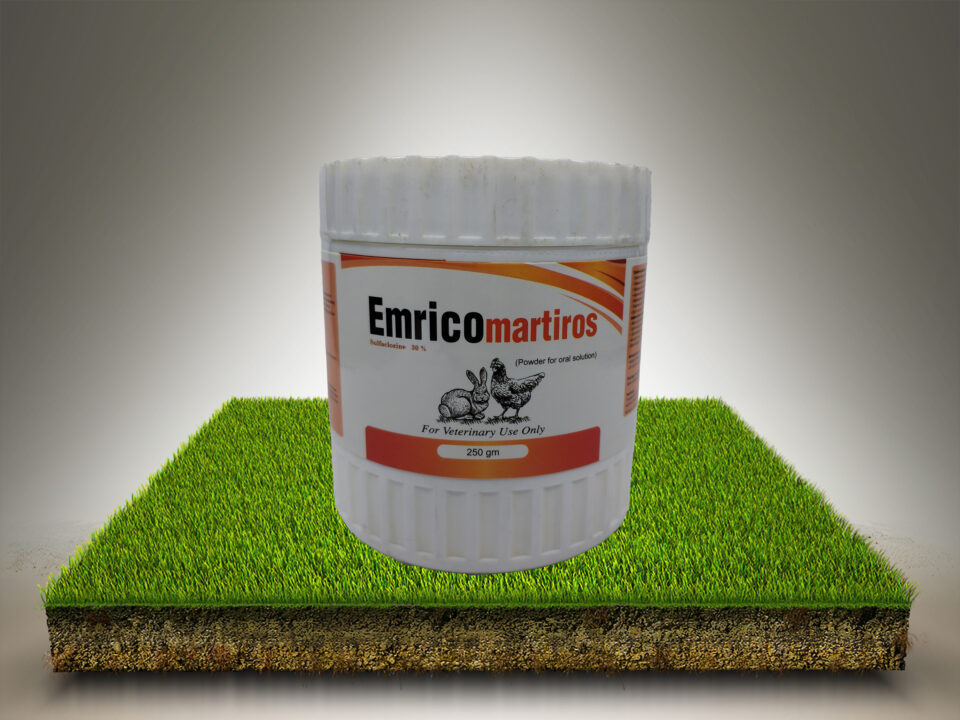
Martsulfa
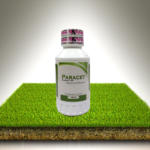
Paracet
W.S.P
For Veterinary Use Only
Composition :
Each 100 gm contains:
Oxytetracycline HCl 20 gm equivalent to Oxytetracycline 18.53 gm
Neomycin Sulfate 20gm equivalent to Neomycin 14 gm
Properties:
Oxytetracycline act as bacteriostatic antibiotics and inhibit protein synthesis by reversibly binding to 30S ribosomal subunits of susceptible organisms, thereby preventing binding to those ribosomes of aminoacyl transfer-RNA. Oxytetracycline also are believed to reversibly bind to 50S ribosomes and additionally alter cytoplasmic membrane permeability in susceptible organisms. In high concentrations, Oxytetracycline can also inhibit protein synthesis by mammalian cells.
Oxytetracycline have activity against most Mycoplasma, Spirochetes (including the Lyme disease organism), Chlamydia, and Rickettsia. Against gram positive bacteria, Oxytetracycline have activity against some strains of staphylococcus and streptococci, but resistance of these organisms is increasing. Gram positive bacteria that are usually covered by Oxytetracycline, include Actinomyces sp., Bacillus anthracis, Clostridium perfringens and tetani, Listeria monocytogenes, and Nocardia. Among gram negative bacteria that Oxytetracycline usually have in vitro and in vivo activity against include Bordetella sp., Brucella, Bartonella, Haemophilus sp., Pasturella multocida, Shigella, and Yersinia pestis. Many or most strains of E. coli, Klebsiella, Bacteroides, Enterobacter, Proteus and Pseudomonas aeruginosa are resistant to the Oxytetracycline. While most strains of Pseudomonas aeruginosa show in vitro resistance to Oxytetracycline, those compounds attaining high urine levels have been associated with clinical cures in dogs with UTI secondary to this organism. Oxytetracycline share nearly identical spectrums of activity and patterns of crossresistance and a tetracycline susceptibility disk is usually used for in vitro testing for oxytetracycline susceptibility.
Neomycin is aminoglycoside antibiotic and has a mechanism of action and spectrum of activity (primarily gram negative aerobes) similar to the other aminoglycosides, including most species of E. coli, Klebsiella, Proteus, Pseudomonas,Salmonella, Enterobacter, Serratia, and Shigella, Mycoplasma and Staphylococcus.
Neomycin act on susceptible bacteria presumably by irreversibly binding to the 30S ribosomal subunit thereby inhibiting protein synthesis. It is considered to be an bactericidal antibiotic.
Indications:
- SWINE :
Bacterial Enteritis (scours), Swine Dysentery (vibrionic dysentery, bloody scours, hemorrhagic dysentery) and Salmonellosis (paratyphoid, necrotic enteritis) caused by Escherichia coli and Salmonella choleraesuis - Bacterial Respiratory Infections (pneumonia, pasteurellosis, bronchitis) caused by Pasteurella multocida .
CALVES:
- Scours (bacterial enteritis, calf scours) caused by Escherichia coli
- Bacterial Respiratory Infections (pneumonia and pasteurellosis associated with the shipping fever complex) caused by Pasteurella multocida .
CHICKENS AND TURKEYS :
- Chronic Respiratory Diseases (C.R.D., air sac infection) caused by Mycoplasma gallisepticum and E. coli
- Bluecomb (transmissible enteritis) and Bacterial Enteritis caused by Escherichia coli
- Infectious Synovitis caused by Mycoplasma synoviae
- Infectious Sinusitis caused by Mycoplasma synoviae
- Stress Conditions (such as when birds are moved, vaccinated, or exposed to extreme temperature changes)
Target Species:
CALVES , CHICKENS , SWINE and TURKEYS
Dosage for active ingredient:
Calves, Swine : 10-30 mg Oxytetracycline/kg and 11 mg Neomycin/kg
CHICKENS , TURKEYS :7-27 gm Oxytetracycline per 100 Liters of water and 11 mg Neomycin/kg
Dose for whole product:
SWINE
– Bacterial Enteritis, Swine Dysentery , Salmonellosis and Bacterial Respiratory Infections :
1 gm from product / 10 kg in drinking water for 4 to 5 days
CALVES
– Scours , Bacterial Respiratory Infections : 1 gm from product / 10 kg in drinking water for 4 to 5 days.
CHICKENS AND TURKEYS
– Chronic Respiratory Diseases, Bluecomb, Bacterial Enteritis, Infectious Synovitis, Infectious Sinusitis and Stress Conditions:
20-80 gm from product per 100 Liters of drinking water
Warnings:
- This product must not be used in lactating dairy cattle, laying chickens, or replacement chickens over 16 weeks of age.
- Fresh solutions should be prepared daily. Medicated water should be the only water source.
- Recommended dosages are based on average water intake.
- Use level and duration of medication period is dependent on the severity of symptoms and response to the treatment level used.
- Use level is also dependent on the past history of disease incidence.
- If symptoms persist, consult your Veterinarian
Contra-indications
Oxytetracycline is contraindicated in patients hypersensitive to it or other tetracyclines. Because tetracyclines can retard fetal skeletal development and discolor deciduous teeth, they should only be used in the last half of pregnancy when the benefits outweigh the fetal risks. Oxytetracycline and tetracycline are considered to be more likely to cause these abnormalities than either doxycycline or minocycline.
Side-effects:
Oxytetracycline given to young animals can cause discoloration of bones and teeth to a yellow, brown, or gray color. High dosages or chronic administration may delay bone growth and healing.
In ruminants, high oral doses can cause ruminal microflora depression and ruminoreticular stasis.
Withdrawal periods:
Calves: 30 days before slaughter
Chickens : 7 days before slaughter.
Swine: 14 days before slaughter.
Turkey: 14 days before slaughter.
Storage:
Store in dry place at room temperature and protected from direct sunlight.
Packaging:
Jar of 50,78, 100,150,200,250,500,1000 gm ,5 kg , 10kg , 15 kg and 25 kg

